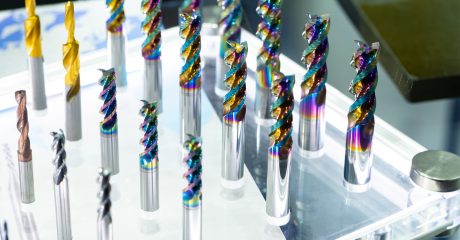There’s no doubt that CNC machining tools are an important part of the CNC machining process. We use these tools for a variety of operations, and they make the job easier and more automated.
While each tool has its specific function and use, there’s no doubt that one of the most utilized types are CNC cutting tools – sometimes referred to as milling cutters. This article will discuss the types of milling cutters and the tips to consider when choosing cutters. If you like to know more, then keep on reading!
Types of Milling Cutters
End Mills – End mills are one of the most popular types of milling cutters, and they are quite similar to drills due to their ability to cut materials axially. There are different variants of the CNC machine tool. They differ in the number of flutes and the different types of noses they have.
Face Mills – This is a more varied type of milling cutter. It has a flat head with replaceable carbide cutting edges. Due to the fact that these cutting edges are on the side of the milling cutter, you can only cut horizontally and not axially. One reason why they remain one of the best types of milling cutters is due to their replaceable cutting inserts. This makes them last even longer and gives a better quality of work over the life of the tool.
Slab Mills – This type of mill cutter is not so common in modern machining centers. Machinists use them to mill flat surfaces as they have no side teeth. They have slab surfaces and are for general heavy-duty operations.
Involute Gear Cutters – Machinists make involute gear cutters by using a special type of milling machine known as a hobbing machine. The type of hobbing machine used to make the gear differs depending on the number of teeth you want the gear to have.
Fly Cutters – Fly cutters are cheaper types of face mills. They consist of the main tool body, which can have one or two tool bits attached to it. The double tool bit fly cutter is also known as double-end fly cutters or fly bars. Machinists use them for making broad and shallow cuts on a workpiece.
Ball Cutters – You can easily identify ball cutters due to their hemispherical cutting tip, which the cutter employs in making corner radiuses on perpendicular faces.
Roughing End Mills – The roughing end mills are usually the go-to CNC machine tool if you have to remove a large piece of material from the workpiece in a short time period. In the place of speed, the cutter sacrifices precision and leaves a rough finish on the workpiece.
Hollow Mills – This mill has a pipe shape and looks inverted in form. Machinists use hollow mills for creating shapes like full points and to form radii due to the cutting edge of the mill.
Woodruff Cutters – Machinists use woodruff or key seat cutters to cut key slots into parts. The cutting tools have teeth perpendicular to the outside diameter to produce suitable slots for woodruff keys.
Reamers – Machinists use reamers to widen holes existing in the workpiece and give them a more precise finish and exact diameter.
Side-and-Face Cutters – Just as the name implies, this type of cutter has teeth both on the side and circumference. Machinists use this cutter to cut slots and grooves. Although they have a functional similarity to end mills, their use has decreased due to new technological advancements.
Tips to Consider Before Selecting Milling Cutters
Choosing the right cutter for your job could be such a task, especially when there are so many options. Here are a few tips to consider before picking the right milling bit:
- The Material the Tool Is Made From
- The Type of Coating on the Tool
- The Number of Flutes
Contact Custom Tool
When choosing a company to work with, experience in their field is a very vital factor and shows the credibility of the company. That is exactly what we offer you when you bring your jobs to Custom Tool & Grinding.
Maintaining communication and supporting our clients every step of the way is vital at Custom Tool. We offer unrivaled support to every project we work on and we make communication with our clients super-easy by providing 24/7 communication through our emails, phone, or website. Contact us today so we can help you on your next project.
